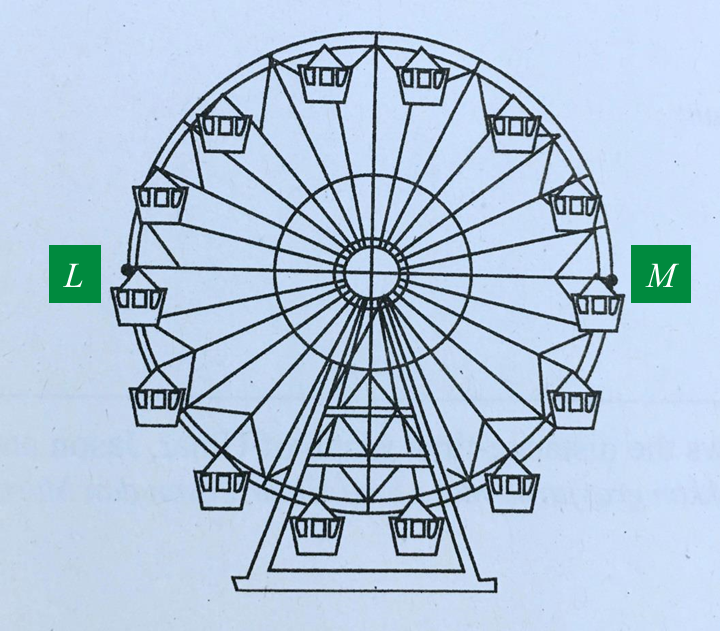Question 16:
(a) Diagram 16.1 shows a Ferris wheel. The distance between point L and point M is 18 m.
 Diagram 16.1
Diagram 16.1
Calculate the minimum number of complete spins required to cover the distance of 600 m in a circular motion.
(b) Diagram 16.2 shows one large pizza and two small pizzas. Assume all pizzas are circular with a flat surface.
 Diagram 16.2
Diagram 16.2
Using , calculate the portion of the large pizza which equals to two small pizzas.
Solution:
(a)
(b)
(a) Diagram 16.1 shows a Ferris wheel. The distance between point L and point M is 18 m.
 Diagram 16.1
Diagram 16.1Calculate the minimum number of complete spins required to cover the distance of 600 m in a circular motion.
(b) Diagram 16.2 shows one large pizza and two small pizzas. Assume all pizzas are circular with a flat surface.
 Diagram 16.2
Diagram 16.2Using , calculate the portion of the large pizza which equals to two small pizzas.
Solution:
(a)
(b)